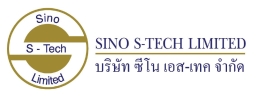Lorem ipsum dolor sit amet, consectetur adipiscing elit. Vivamus magna. Cras in mi at felis aliquet congue. Ut a est eget ligula molestie gravida. Curabitur massa. Donec eleifend, libero at sagittis mollis, tellus est malesuada tellus, at luctus turpis elit sit amet quam. Vivamus pretium ornare est.
Delivering Intelligent WFM Solutions for Intraday Management
NICE Employee Engagement Manager (EEM) is a key component of the NICE Intelligent WFM SuiteTM, a full-lifecycle WFM offering, which delivers intelligent automation solutions to the WFM domain of intraday management. EEM automatically optimizes staffing after WFM schedules are published, both intraday and up to several weeks into the future. By identifying staffing variances in advance, EEM reduces or eliminates friction before it can materialize.

EEM is an add-on solution that integrates with a variety of WFM systems to:
- Fix staffing gaps– EEM intelligent automation proactively, automatically, and continuously identifies intraday gaps, determines who can fill them, personalizes schedule change offers, and updates all schedules.
- Cut processing time– EEM intelligent automation manages schedule change processing (voluntary and paid time off, self-swaps, shift trades, extra hours, absence requests), internal communication and approvals, adherence monitoring, and KPI alerts.
- Boost employee engagement– EEM intelligent automation personalizes self-scheduling with preapproved intraday and near-term options; offers around-the-clock multichannel self-scheduling access; and enables “push” offers of up-to-the-minute shift change opportunities, desktop alert popups, and mobile in-app notifications.
Drive Operational Benefits with Employee Engagement
EEM provides employee scheduling software enabling on-demand schedule changes that are made available only when they benefit the contact center. Employees can view and adjust their shifts and time off with a virtual “scheduling assistant” anytime and anywhere, in the contact center or “on the go” with the EEM mobile app. This eliminates labor-intensive and time-consuming communication, review, and approval workflows for agents, supervisors, and administrators. Schedule change opportunities for employees are dynamically balanced and automatically adjusted in real-time to optimize staffing while reinforcing transparency, flexibility, and control for the agent.
Overcome WFM Challenges in Intraday Management
Workforce management in the contact center is the art of effectively forecasting staffing needs, scheduling accordingly, and then managing change. Despite the best efforts of management and the abilities of WFM technology, unplanned changes after a schedule is released are common. When an agent calls in sick, a queue blows up or volume is lower than forecasted, intraday variances can impact service levels, productivity, and cost-effectiveness. Overstaffing eats away at earnings due to higher average idle times and operational costs while understaffing increases employee overtime and negatively impacts CSAT scores. And when CSAT scores tumble, customer churn skyrockets.
Standard workforce-management-based tools for intraday management streamline scheduling, but they aren’t designed to automatically optimize staffing levels or instantly process a variety of inbound and outbound schedule changes with automated decision-making. As a result, they need another layer to effectively handle intraday and near-term modifications, such as when an agent is unexpectedly available for extra hours at short notice. An intraday management layer with intelligent automation puts even more control in the hands of employees, with options such as automated self-swaps of shifts, independent shift trading, and the ability to schedule voluntary or paid time off in response to dynamic business demands. EEM delivers a new category of WFM solutions: Intelligent Automation for Intraday Management.
Realize Clear, Rapid, and Measurable ROI
The positive financial impact customers enjoy from EEM is both immediate and long-term. EEM measurably drives immediate ROI through its ability to:
- Reduce intraday variances– Solve overstaffing and understaffing that occurs in the near term and intraday after WFM schedules are published.
- Reduce WFM process time –Cut out the middleman in processing schedule change requests, KPI monitoring, and intervention, e.g., schedule adherence.
- Improve occupancy– Manage staffing levels for improved occupancy and switch agents between interactions and offline activities automatically as needed.
- Reduce overtime pay– Intelligently balance schedules in order to reduce aggregate overtime premium pay, even when employees need or choose to work extra hours.
EEM also creates satisfied and engaged employees, which contributes to longer-term ROI growth in three key areas:
- Employee retention: Research shows that employees who are able to manage their work schedules to fit their personal needs are more satisfied. EEM reduces friction in the scheduling process while enabling agents to maintain a work-life balance.
- Hiring and development: A flexible scheduling mindset and a focus on employee development show potential new hires that a contact center is willing to invest in its employees.
- Customer satisfaction: Satisfied employees return dividends through improved performance, thus increasing customer satisfaction scores and decreasing churn.
Uncover the Untapped Opportunity for WFM Automation
Contact center leaders are already familiar with sophisticated WFM solutions, like NICE WFM, that automate scheduling and forecasting. However, they often haven’t considered other workforce management functions that are ripe for automation. EEM is the key to proactive staffing optimization and WFM process automation. It delivers proven operational benefits to the contact center, with a realized value ranging from hundreds of thousands to millions of dollars within the first year alone. And the benefits just keep getting better from there, with contact centers realizing ever-greater productivity, employee retention, service level adherence, performance, and revenue well into the future.


